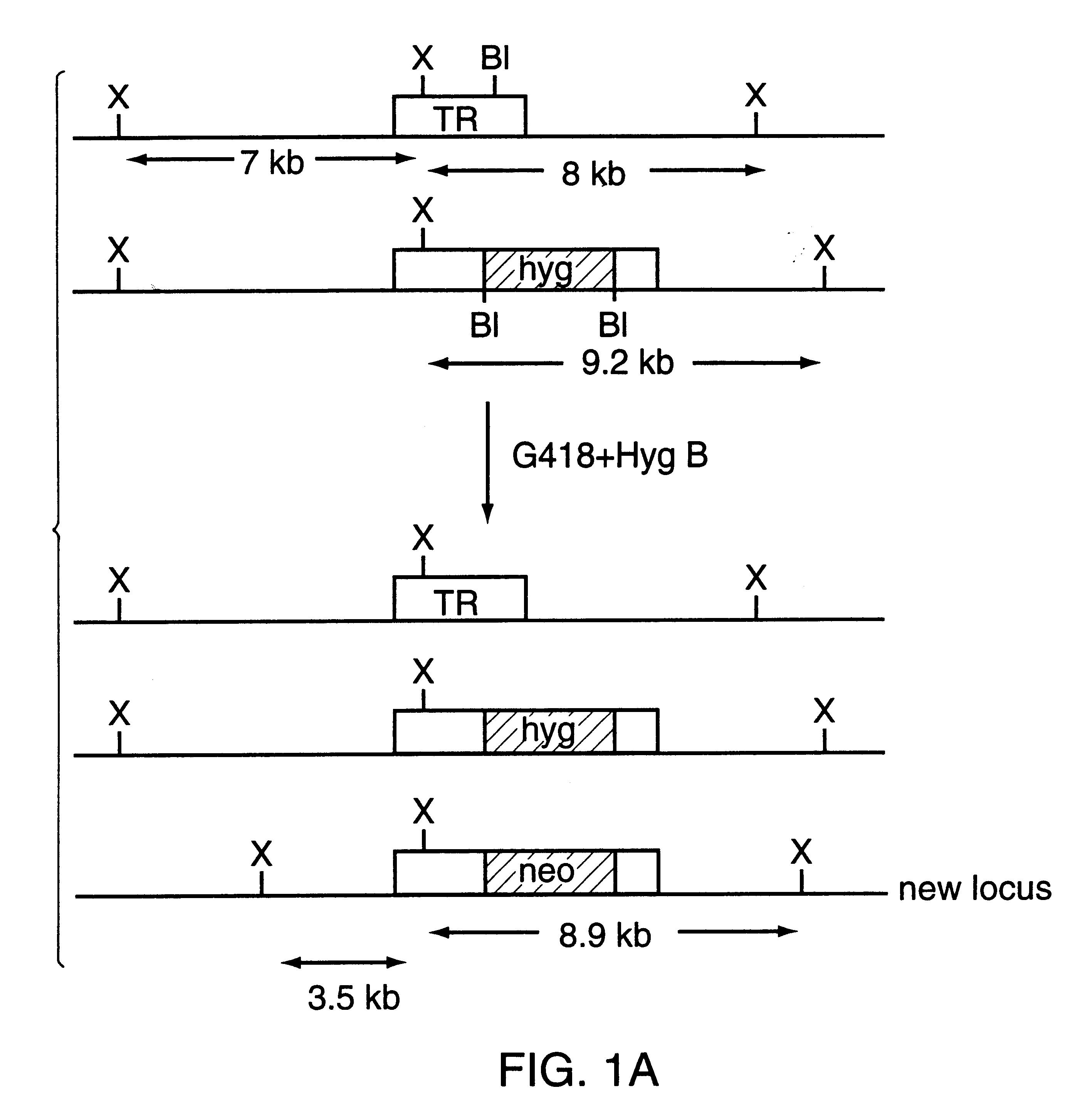Attenuated strains of leishmania and uses thereof
a technology of attenuated strains and leishmania, which is applied in the direction of plant growth regulators, enzymes, biocides, etc., can solve the problems that the structures derived from one species are not suitable for the targeting of genes of another species of leishmania, and achieve the effect of reducing the rna level
- Summary
- Abstract
- Description
- Claims
- Application Information
AI Technical Summary
Benefits of technology
Problems solved by technology
Method used
Image
Examples
example 1
This Example describes the culturing and transfection of Leishmania.
The Leishmania tarentolae strain Tar II has been described previously (ref. 21) and the Leishmania major 50122 and Leishmania donovani 50212 strains were obtained from the ATCC. All strains were grown in SDM-79 medium (ref. 13), supplemented with 10% fetal bovine serum (FBS) (Multicell, Wisent Inc.) and 5 .mu.g / mL of hemin. Two to 3 .mu.g of linearized DNA from targeting constructs purified from LMP agarose (Gibco-BRL) were used for transfections into Leishmania cells for electroporation as described previously (ref. 14). Transfectants were selected with 40 .mu.g / mL of G-418 (Geneticin, Gibco-BRL), or 80 .mu.g / mL of hygromycin B (CalBiochem). Murine macrophage cell line J774, obtained from ATCC, was cultured in Dulbecco's modified Eagle's medium (D-MEM, Gibco-BRL), supplemented with 10% FBS, L-glutamine (2mM), penicillin G (100 U / ml) and streptomycin (100 .mu.g / ml). Human peripheral blood monocytes were isolated fro...
example 2
This Example describes techniques of recombinant DNA and the construction of targeting constructs.
A large portion of the trypanothione reductase (TR) coding region (85% of the TR gene from nucleotide 153 to 1406) from L. tarentolae, L. donovani donovani TR and L. major total DNAs was amplified by PCR using degenerated oligonucleotide primers derived from the L. donovani TR coding sequence (ref. 16). The HpaI-SacI PCR products (1.2 kb for the L. donovani and L. tarentolae and 1.3kb for the L. major) were subcloned into SacI-SmaI sites of pSP72 vector (Promega). To make the TR gene knockout constructs, the neomycin phosphotransferase (neo) and hygromycin phosphotransferase (hyg) cassettes (ref. 10) were introduced as SmaI-EcoRV fragments into the unique BalI-site of the TR gene. For the TR gene of L. tarentolae a neo-I-SceI cassette was introduced instead of a neo cassette. A cosmid clone containing the entire TR coding region and flanking sequences necessary for its expression was is...
example 3
This Example describes the in vitro infection of macrophages.
The capacity of the Leishmania TR mutants to infect murine and human macrophages in vitro was tested in comparison to control Leishmania-neo transfectant, as follows. Murine and human macrophages were seeded (200 .mu.l per well, 5.times.10.sup.4 cells / mL) into 8 wells chamber slides, and were infected with parasites, at a parasite to cell ratio of 20:1 for a period of 6 hours. Following this incubation, the non-engulfed parasites were removed by 3 to 5 washes with warm medium and chambers were replenished with 500 .mu.L of fresh culture medium. The level of infection was determined at 6, 24, 48 and 72 hours by optical microscopy examination following Diff Quick staining of cell preparations.
PUM
| Property | Measurement | Unit |
|---|---|---|
| separation angle | aaaaa | aaaaa |
| temperature | aaaaa | aaaaa |
| antibiotic resistance | aaaaa | aaaaa |
Abstract
Description
Claims
Application Information
 Login to View More
Login to View More - R&D
- Intellectual Property
- Life Sciences
- Materials
- Tech Scout
- Unparalleled Data Quality
- Higher Quality Content
- 60% Fewer Hallucinations
Browse by: Latest US Patents, China's latest patents, Technical Efficacy Thesaurus, Application Domain, Technology Topic, Popular Technical Reports.
© 2025 PatSnap. All rights reserved.Legal|Privacy policy|Modern Slavery Act Transparency Statement|Sitemap|About US| Contact US: help@patsnap.com



